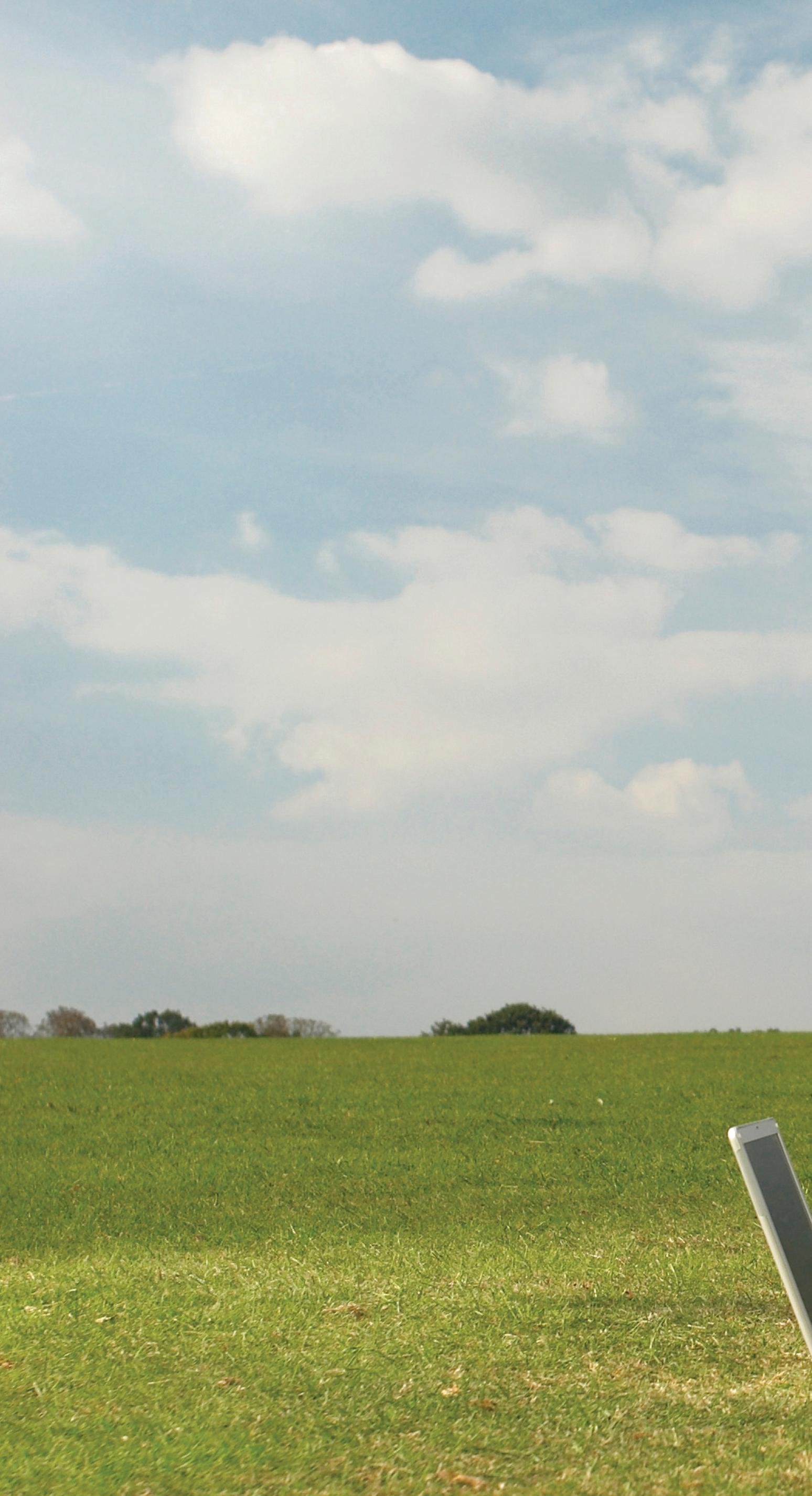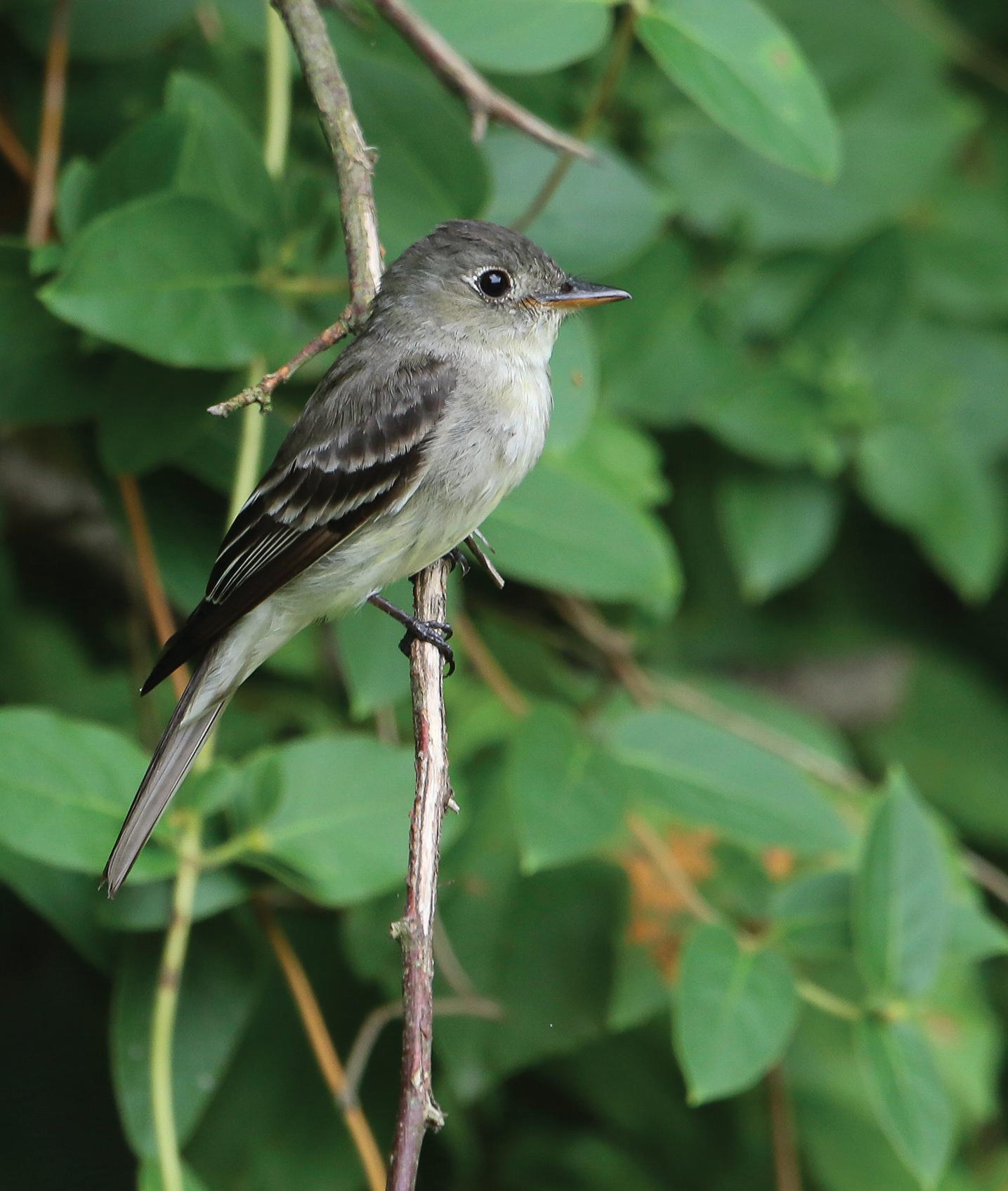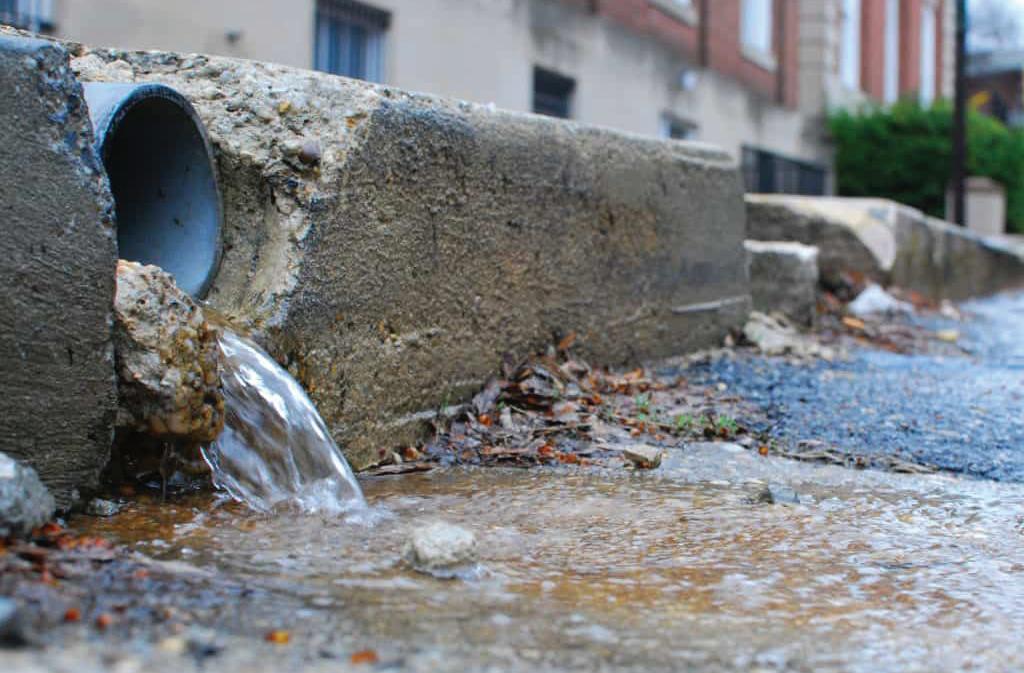
13 minute read
CONTENTS
BAY BULLETIN
chesapeakebaymagazine.com/baybulletin
Advertisement
Stormwater runoff flows onto a street in Annapolis. Photo: Matt Rath/Chesapeake Bay Program
REPORTS BLAST BAY STATES’ POLLUTION DIET PLANS, LAWSUITS LOOM
BY MEG WALBURN VIVIANO
As the Chesapeake Bay Program Executive Council gathers (virtually) for its annual meeting on the state of the Bay’s cleanup efforts, two different environmental reports find a couple of Bay states are not on track to keep up their stormwater pollution commitments.
Less than a week ahead of the Executive Council meeting, which convenes governors and environmental leaders from all of the Bay watershed’s jurisdictions, the Chesapeake Bay Foundation (CBF) released a report assessing the states’ progress in reaching the Bay Program’s 2025 pollution reduction goals.
Each state must hit smaller goals outlined in its Watershed Implementation Plan to allow the entire Chesapeake Bay to reach its ultimate Clean Water Act goals by 2025. CBF’s report finds that Maryland and Virginia are on track, but both will need to accelerate reducing pollution from agriculture, urban and suburban runoff. The report finds Pennsylvania has never met its nitrogen reduction targets, and its Watershed Implementation Plan only achieves 75 percent of the reductions necessary to reach its 2025 goal.
CBF says the most recent assessment of Pennsylvania’s rivers and streams shows more than 25,800 miles of impaired waterways—5,500 more miles
—CHESAPEAKE BAY FOUNDATION’S PENN. SCIENCE POLICY AND ADVOCACY DIRECTOR, HARRY CAMPBELL
than were measured in 2016. CBF intends to sue the U.S. Environmental Protection Agency for failing to hold Pennsylvania accountable to its Bay cleanup responsibilities. CBF and the Maryland Watermen’s Association, along with the attorneys general of Maryland, Virginia and Washington, D.C., filed Notices of Intent back in May, after which there is a 60-day period to allow for an out-of-court resolution.
That hasn’t happened, CBF says, and expects to file suit in the next couple of weeks.
On Monday, an environmental coalition released a second report showing both Pennsylvania and Maryland have “gone backwards” in efforts to control stormwater pollution in the Bay. The report released by the Environmental Integrity Project (EIP), Waterkeepers Chesapeake and the Lower Susquehanna Riverkeeper says Pennsylvania’s 2019 Watershed Implementation Plan allows 47 percent more nitrogen pollution from urban and suburban stormwater runoff than its 2012 plan did.
The EIP report also finds Maryland’s most recent plan allows 17 percent more nitrogen compared to its 2012 plan. These “retreats” in stormwater runoff efforts come at a bad time, as stormwater becomes a frequent problem due to global warming, the report’s authors say.
“It is inexcusable that Maryland and Pennsylvania are backtracking on their commitments to control urban stormwater pollution at a time when climate change and increasing rainfall are having such a huge impact on the Chesapeake Bay,” says Abel Russ, EIP Senior Integrity Project and co-author of the report.
Together, Pennsylvania, Maryland and Virginia account for 90 percent of the stormwater pollution in the Bay, and ultimately, it will take all three meeting their goals to accomplish a restored Chesapeake.
“Plans are only as good as their implementation,” says CBF’s Penn. Science Policy and Advocacy Director, Harry Campbell, “and this is a significant shortfall.”
INVASIVE PLANT POISED TO OVERRUN POTOMAC WATERSHED
BY JEREMY COX, BAY JOURNAL NEWS SERVICE
It springs to life each year in freshwater ponds and lakes as temperatures rise. By the middle of summer, the foliage is so thick and bushy at the surface that the water below is plunged into darkness, with hardly any oxygen seeping in from the air above.
Across Northern Virginia, the invasive aquatic plant has spread to dozens of locations, according to state and federal scientists. It looks a lot like Trapa natans, the water chestnut that has blanketed waterways on Maryland’s Upper Shore and the Northeast United States, but it isn’t.
It’s a different type of water chestnut: Trapa bispinosa. And Northern Virginia is the first place it has been found growing in the country. Biologists want to keep it that way.
If eradication efforts don’t ramp up soon, though, they warn that the species could spread beyond its current backwater haunts to the Potomac River and become a much bigger ecological headache. The 400-mile river’s currents could whisk T. bispinosa seeds just about anywhere, dampening hopes of containing the invasive plant, said Nancy Rybicki, a George Mason University professor and retired U.S. Geological Survey aquatic plant ecologist.

Above: An invasive species of water chestnut covers the surface of a lake in Fairfax County, Va. Left: The seed pods of Trapa bispinosa have two hooklike horns. Photos by Nancy Rybicki
“Here, we have a chance to manage it while it’s only in stormwater ponds, farm ponds and homeowners association ponds,” she said. “This horse is not out of the barn.”
The biggest obstacle, Rybicki said, is that no one seems to be in charge of dealing with the problem. There is no management plan to guide its removal and no agency with clear authority to tackle it.
John Odenkirk, a biologist with the Virginia Department of Game and Inland Fisheries, said he began working on the water chestnut infestation a few years ago even though controlling aquatic plants falls outside of department’s mission.
“We took it upon ourselves because we realized it could be an issue and it could be linked to habitat for fish,” Odenkirk said. Other agencies, such as the state agricultural and environmen
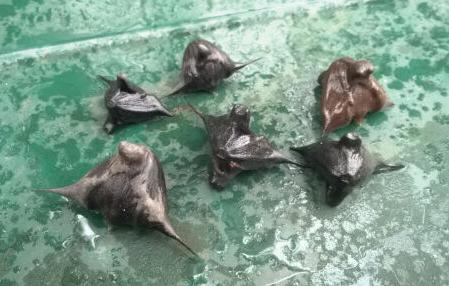
tal divisions, have a regulatory stake in it, he added, “but it’s unclear who has the authority to deal with nonnative aquatic plants.”
“It’s just a gray area in Virginia regulations,” Odenkirk said.
He was the first to spot it in Virginia. Odenkirk said he was working in Pohick Bay along the Potomac in Fairfax County in 2014 when he saw a patch of vegetation he didn’t recognize. He called Rybicki. Both agreed that it resembled water chestnut. But that species had been driven out of the Potomac at great expense and effort by the U.S. Army Corps of Engineers in the 1950s.
The new plant also exhibited subtle differences from T. natans. Their leaves share the same serrated pattern, but the underside of T. natans is light green, not red like what Odenkirk had discovered. T. natans has white flowers; these new ones are pink. The seed pods differ as well, with four hooklike horns on T. natans vs. two on the new plant.
By 2019, after scouring resources from around the world and sequencing the plant’s DNA, Rybicki arrived at an identification: a variant of water chestnut native to Taiwan. How did it get to Virginia? Rybicki can only speculate.
Botanical records suggest that T. bispinosa arrived in the Potomac water
See INVASIVE on next page

Here Come the Storms: First-Ever County Hurricane Preparedness Week Comes Amid Record Atlantic Hurricane Season
BY KATHY KNOTTS
There’s still 15 weeks to go in the 2020 Atlantic hurricane season, which means we are just halfway through what is predicted to be an “extremely active” season according to an August update by NOAA.
NOAA says conditions are primed to fuel storm development, leading to an 85 percent chance we’ll see 19 to 25 named storms. We have already had 11 named storms, with two more potentially brewing this week. So it makes sense that the Anne Arundel County Office of Emergency Management would dedicate this week to be its first ever Hurricane Preparedness Week. Throughout the week, hurricane prethe Phillips Wharf Estuarium and touch tanks and an aquarium as well anchor line—and off they go.
paredness tips have been shared via the Anne Arundel County’s Office of Emergency Management social media accounts.
As with every hurricane season, the
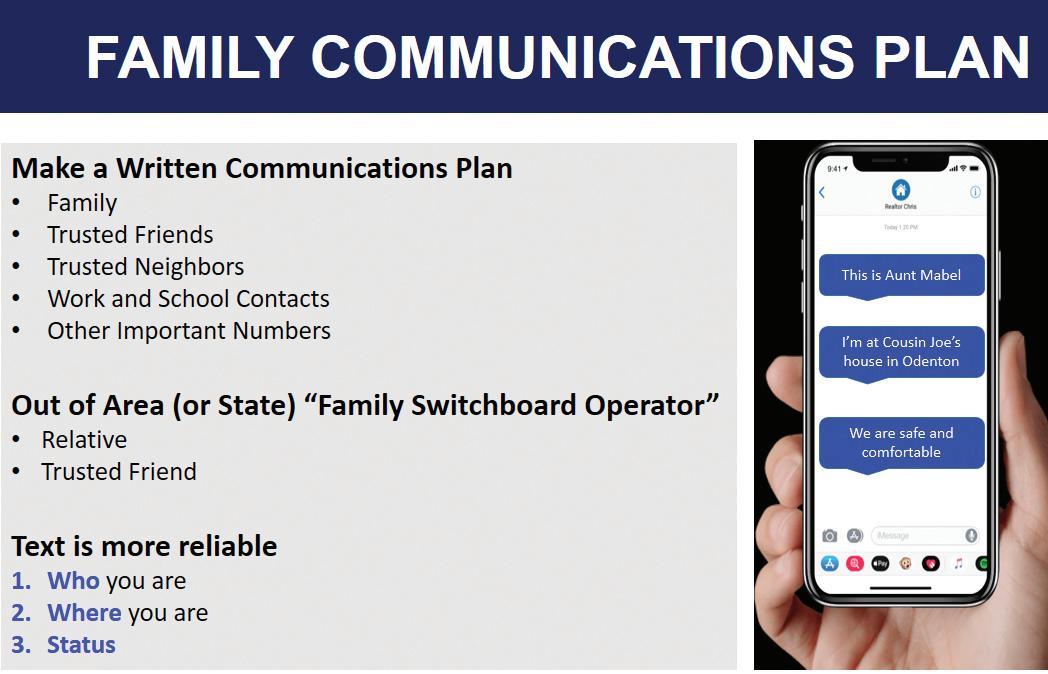
need to be prepared is critically important this year. But there’s another factor to take into account. OEM encourages everyone to keep COVID-19 in mind when making plans for you,

your loved ones and pets.
Some of the reminders OEM is sharing include making a plan and discussing it with family members;
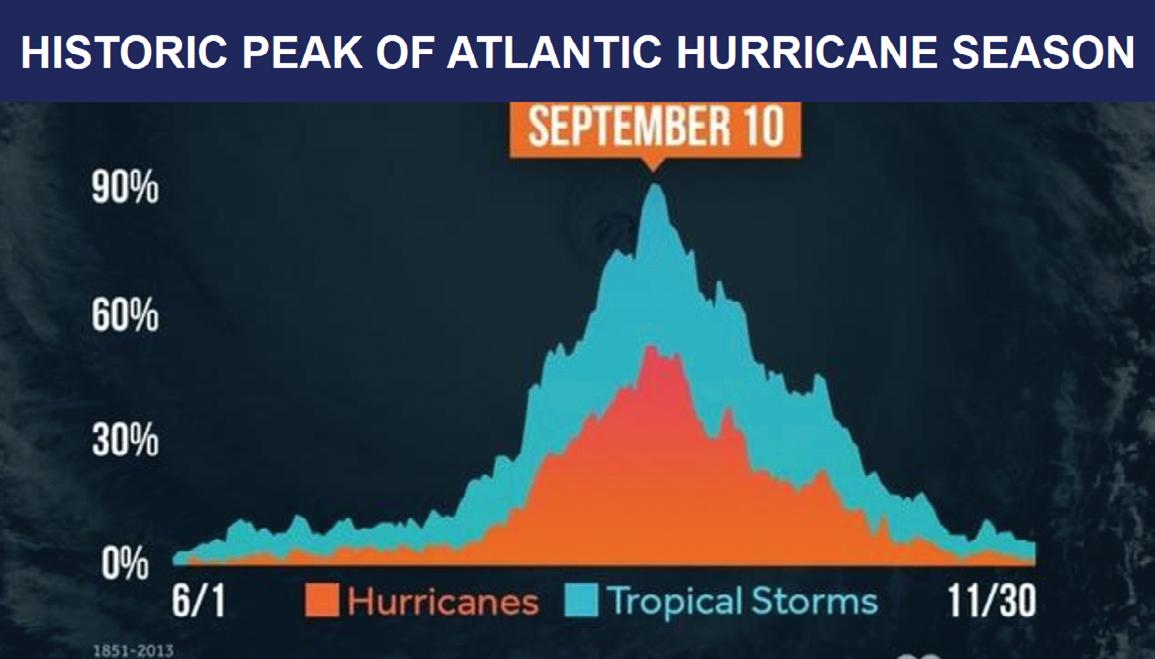
BY MEG WALBURN VIVIANO
The damage could have been worse for most parts of the Chesapeake region, when Tropical Storm Isaias came straight up the coast. But for the Phillips Wharf Environmental Center on Tilghman Island, Isaias dealt the second of two blows in 2020. The environmental center’s campus has been closed to the public for the last five months, since the COVID-19 pandemic began, and all of its programs canceled. Then, on August 4, Tropical Storm Isaias brought heavy rain, big wind gusts, and an eye-popping total of 36 tornadoes to Maryland and Virginia. In Talbot County, the highest wind gust was clocked at 56 miles per hour.
A tree came crashing down on classroom building, spaces that hold as adult and student learning areas. Staff members were next door when the tree came down and were able to cut off power before the tree caused further problems. But the damage to the roof and ceiling have made it hazardous for staff to be inside.
Center Administrator Josh Poore tells Bay Bulletin that staff have been doing important work in the building, even while the center is closed.
“Our staff continues to utilize the classroom during our shutdown as we have maintained a few of our animals and we are still working hard
INVASIVE from page 5
shed as early as 1995 in Westmoreland and Stafford counties, her investigation found. Perhaps someone planted it in their own pond, and it escaped. The hooks on the seed pods can become attached to waterfowl feathers or a boat’s monitoring radio, TV and social media
Rybicki’s surveys have sighted T. bispinosa in 54 locations across five counties, all of them in Virginia within the Potomac River watershed. Some have been successfully knocked down
Photo: Phillips Wharf Environmental Center/Facebook A large tree came down during Tropical Storm Isaias, damaging the environmental center’s roof and ceiling.
on our oyster restoration programs,” Poore explains.
And the environmental center wants to be ready to go when the pandemic allows it to reopen. In a Facebook post, Phillips Wharf writes, “Repairs to this building are necessary for our staff to have a safe place to work and so that we can be
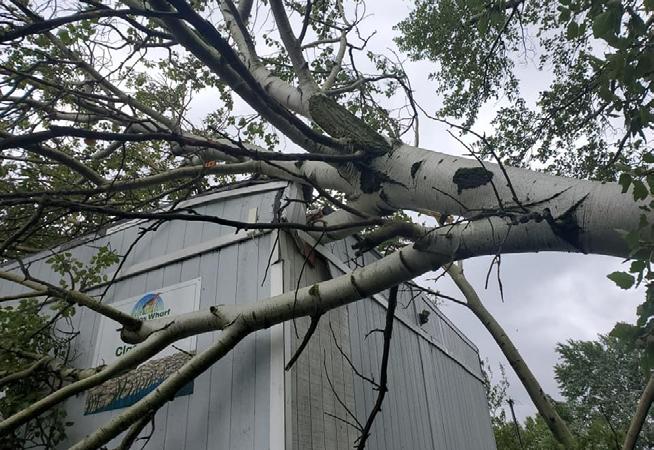
by using herbicides or simply being yanked out by hand. But 31 sites remain “active,” putting more than 500 water bodies within a 3-kilometer radius of the outbreaks at risk of infestation, according to Rybicki’s research. Odenkirk echoed Rybicki’s call for
Graphics courtesy of AA Co. OEM
channels; listening for emergency alerts; and evacuating when told to do so. Plan on taking cleaning items with you to any shelter or community center if necessary, maintain 6 feet of separation between people you do not live with, and have face coverings for the entire family (over age 2). Items to now include in your “HurriDemic” GoKit: face coverings (two per person), disinfectant wipes, soap/hand sanitizer (60 percent or higher alcohol), and personal hygiene items.
For more information on being prepared this hurricane season or to catch up on daily messages, follow the Anne Arundel County Office of Emergency Management on Facebook and Twitter, by phone 410- 222-0600 or email oem@aacounty.org.
ready to receive you and your families when it is safe to do so again.”
The center is asking for help to meet its $5,000 deductible and other expenses not covered by insurance to fix the damage. Anyone interested in making a donation can go to their fundraiser page at https://bit. ly/33Xyc8f.
When pandemic-related closures aren’t in effect, the five-acre waterfront campus offers year-round educational programs for students and adults, including a shellfish aquaculture training program. Its Fishmobile travels to schools and events in the region as Phillips Wharf’s marine science outreach program.
Anyone interested in making a donation can go to their fundraiser page at https:// bit.ly/33Xyc8f.
more help defeating their pesky foe.
“Basically, she and I are the team so far,” he said. “I just don’t have time to manage this. It’s going to take somebody almost full-time, 40 hours a week for a year, year and a half, and building a [volunteer] network to take care of it.”
A Bookworm’s Grab Bag, Chosen Just for You
BY KRISTA PFUNDER
Miss walking among library bookshelves browsing the latest bestsellers? Not sure what book to read next? If so, Calvert Library has two new programs to help you pick your next read.
The Grab Bag program is a mini-browsing experience, where customers make an appointment online; pick up a grab bag of items at curbside and then browse through the items at home. After deciding what to keep, unwanted items can be dropped in the book return.
“We received a Facebook comment that read, ‘As a mom of small kids, my typical strategy was to just grab

Librarian Jessie Bauer packs a Calvert Library Grab Bag. Photo courtesy Calvert Library
as many random picture books as I could,’” says Robyn Truslow, public relations coordinator for Calvert Library. “The customer asked if we could offer a surprise book pickup with lots of books and that her kids love all books so subject matter wouldn’t be important. They just like having lots of new books to choose from for story time. Quite a few other customers applauded her idea and echoed her request. We loved the idea and ran with it.”
Make an appointment to pick up a Grab Bag at bit.ly/calvertcurbside and request picture books, children’s books, adult fiction, DVDs and more.
“We are also handing out a print version of this form at the school lunch pickup spots so we can help students and their families get library books even if they don’t have internet,” Truslow says.
It doesn’t take long for your books to be ready for pick up. “Grab bags are quick because the customer is making a very general request that we fill from what we have on hand,” Truslow says. “If a customer makes an appointment for the next day and requests a Grab Bag of 20 children’s picture books, those books will be in their bag for pick up.”
If you crave a more tailored selection, Calvert Library offers “PS from Calvert Library.” PS stands for Personalized Suggestions.
“The PS program is for customers who like specific reading recommendations from librarians,” says Colleen Cano, Calvert Library adult resources coordinator. “Fill out the form online at bit.ly/psfromcalvert with your reading preferences and a librarian will send you suggestions tailored to your needs that you can then place on hold. If you want more help, just give us a call.”
Customers can pick from genres such as adventure, inspirations, westerns, humor and war stories. However, selections made via the PS from Calvert Library aren’t ready for pick up as quickly as Grab Bag items.
“It will usually take a little longer since we’re doing research and then sending our recommendations to the customer to place holds on the items they choose from that list,” Truslow says. “Sometimes the specific titles might not be at the library the customer has selected for pickup so the item has to get to that library.”
It’s not just books that Calvert Library members can check out from the library via Grab Bag or PS. You can also borrow Playaways (pre-loaded audiobooks), books on CD, and DVDs.
Curbside items are available for pick up 10am-7pm Monday thru Thursday; 1-5pm Friday and 10am-2pm Saturday; https://calvertlibrary.info/.
GRANDFATHER CLOCK REPAIR Celebrating51Years We also fix wall & mantel clocks






